Brewing Beer with Special Roast Malt
Published: July 31, 2025 at 8:28:56 AM UTC
Last updated: December 9, 2025 at 8:11:58 PM UTC
Brewing beer with special roast malt can elevate the flavor profile of your beer. It adds notes of tangy, toasty, and sourdough characteristics. Using special roast malt in your brewing process can create a rich and complex flavor profile. This type of malt is roasted to bring out unique flavors. It's ideal for brewers looking to experiment with new recipes.
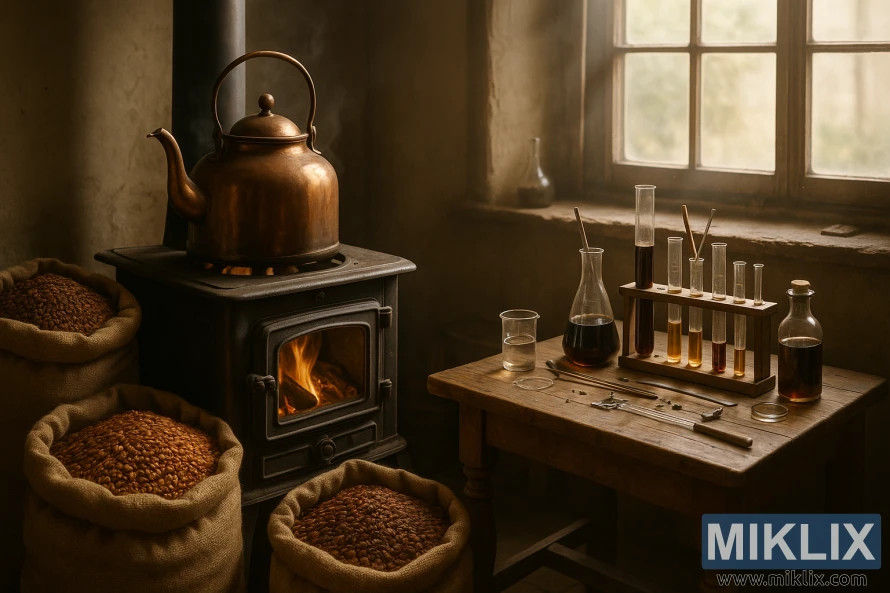
Key Takeaways
- Understand the role of special roast malt in brewing beer.
- Learn how to achieve a tangy, toasty, and sourdough flavor profile.
- Discover the benefits of using special roast malt in your brewing process.
- Explore new beer styles that can be created with special roast malt.
- Improve your brewing techniques with special roast malt.
Understanding Special Roast Malt
Special roast malt, crafted from malted barley, is essential for creating unique beer flavors. The creation of this malt involves roasting barley to high temperatures. This process develops its rich, complex taste.
The roasting process is critical, as it reveals the malt's unique traits. By adjusting the temperature, brewers can achieve a variety of flavors. These range from nutty and toasted to deep, dark fruit notes.
Special roast malt is a versatile ingredient in brewing. It adds depth and complexity to different beer styles. It's perfect for stouts and porters, where its robust flavors can truly shine.
Understanding special roast malt's nuances helps brewers make better recipe choices. By using this malt, they can craft beers with distinctive and captivating flavors.
The Distinctive Flavor Profile of Special Roast Malt
Special roast malt adds a rich, complex flavor to beers, making it a favorite among brewers. Its distinctive flavor profile is characterized by tangy, toasty, and sourdough notes. These are developed through the roasting process.
This unique flavor profile is perfect for stouts and porters, where a rich, complex taste is desired. The roasting process enhances the natural sugars and flavor compounds in the malted barley. This contributes to the malt's distinctive taste.
Using special roast malt in brewing opens up a wide range of flavor possibilities. By incorporating this malt, brewers can create beers with deep, complex flavor profiles. These appeal to a variety of palates.
In summary, the flavor profile of special roast malt makes it a valuable ingredient in brewing. It's essential for creating rich, complex beers.
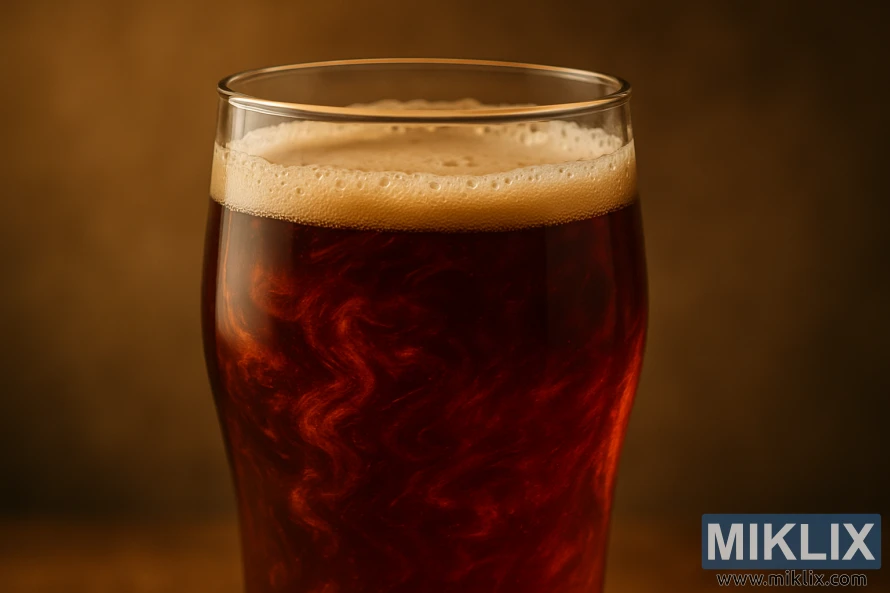
Key Characteristics and Specifications
Understanding special roast malt's key characteristics is vital for brewers. It helps in achieving the desired flavor and quality in their beers. Special roast malt, a type of malted barley, adds depth and complexity to various beer styles.
Moisture content is a critical specification of special roast malt, typically around 3-4%. This lower moisture content is essential. It affects the malt's storage and handling properties. A lower moisture content helps preserve the malt's quality over time.
The yield of special roast malt is another important characteristic. It usually has a yield of around 70-80%. This yield is somewhat lower compared to other types of malt. It affects the amount of extract obtained during brewing, influencing brewing efficiency.
The key characteristics and specifications of special roast malt can be summarized as follows:
- Moisture content: around 3-4%
- Yield: typically around 70-80%
These specifications are vital for brewers to understand. They directly impact the brewing process and the final product's quality. By knowing these characteristics, brewers can better plan their recipes and brewing techniques. This helps achieve the desired outcomes.
Impact on Beer Styles
Special roast malt significantly enhances flavors in stouts, porters, and other beer styles. It plays a key role in creating rich, complex flavors. This makes it essential for brewers aiming to elevate their beer's taste.
Stouts and porters greatly benefit from special roast malt. These beers need a deep, complex flavor profile. The malt's unique flavors, like tangy, toasty, and nutty notes, add depth and complexity.
Beyond stouts and porters, brown ales and amber ales also benefit from special roast malt. Its ability to add complexity and depth makes it versatile in brewing. It's a valuable ingredient for brewers looking to enhance their beer's flavor.
- Enhances flavor complexity in stouts and porters
- Adds depth to brown ales and amber ales
- Provides a rich, complex flavor profile
Understanding special roast malt's impact on beer styles helps brewers make better choices. It guides them in using it effectively in their brewing techniques.
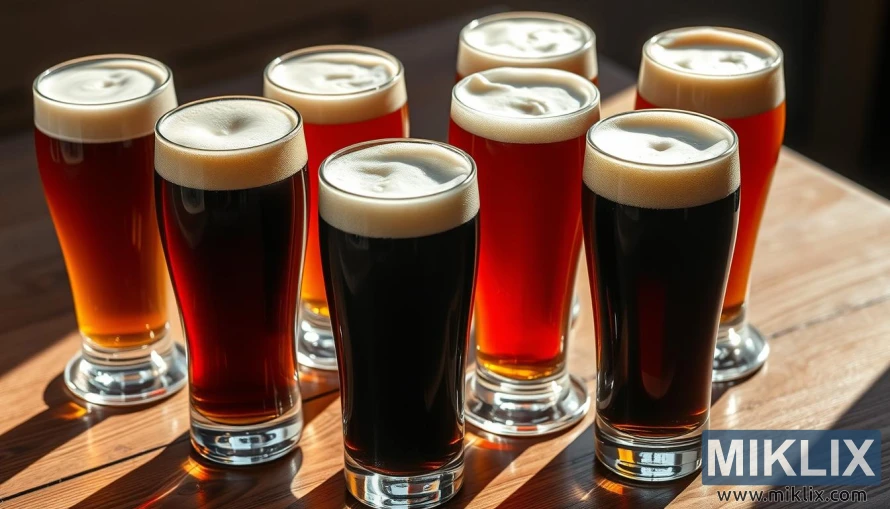
Brewing Techniques with Special Roast Malt
Brewing techniques, such as mashing and sparging, are key to extracting flavors from special roast malt. To fully realize its flavor, brewing with special roast malt demands meticulous attention. This ensures the malt's full flavor is captured.
Mashing involves soaking the special roast malt in hot water to extract sugars and flavor compounds. The temperature and pH during mashing are critical. They significantly influence the beer's flavor. A higher temperature can make the beer sweeter and maltier. A lower temperature can result in a drier, more attenuated taste.
Sparging rinses the malt with hot water to extract remaining sugars. This process must be done with care to avoid unwanted compounds. The sparge water's temperature also impacts extraction efficiency and beer flavor.
To get the best results, brewers must control mashing and sparging closely. They need to monitor temperature, pH, and water-to-malt ratio. This careful control unlocks special roast malt's unique characteristics, creating a complex, flavorful beer.
- Monitor temperature and pH during mashing to achieve the desired flavor profile.
- Control the sparging process to avoid extracting unwanted compounds.
- Adjust the water-to-malt ratio to optimize extraction efficiency.
By mastering these techniques, brewers can craft high-quality beers that highlight special roast malt's distinctive flavor. Whether brewing a robust porter or a complex barley wine, special roast malt adds depth and character.
Recipe Development and Proportions
Brewing a great beer with special roast malt demands a thoughtful approach to recipe development and ingredient proportions. The unique flavor profile of special roast malt can elevate a beer. But achieving the desired taste requires careful balancing of ingredients.
When developing a recipe, brewers should consider the type of beer they want to brew. They should think about how special roast malt will contribute to its flavor profile. For instance, a beer with a nutty or toasty flavor might include a higher proportion of special roast malt.
The proportions of brewing ingredients can significantly impact the final product. Here are some key considerations:
- The proportion of special roast malt to pale malt can affect the beer's overall flavor and color.
- The type and amount of hops used can complement or contrast with the flavors contributed by special roast malt.
- Other ingredients, such as yeast and water, also play critical roles in the brewing process. They should be chosen to complement the special roast malt.
By carefully adjusting the proportions of these ingredients, brewers can create a wide range of beer styles. These styles showcase the unique qualities of special roast malt. Experimenting with different recipes and proportions is a key part of the brewing process. It allows brewers to innovate and refine their craft.
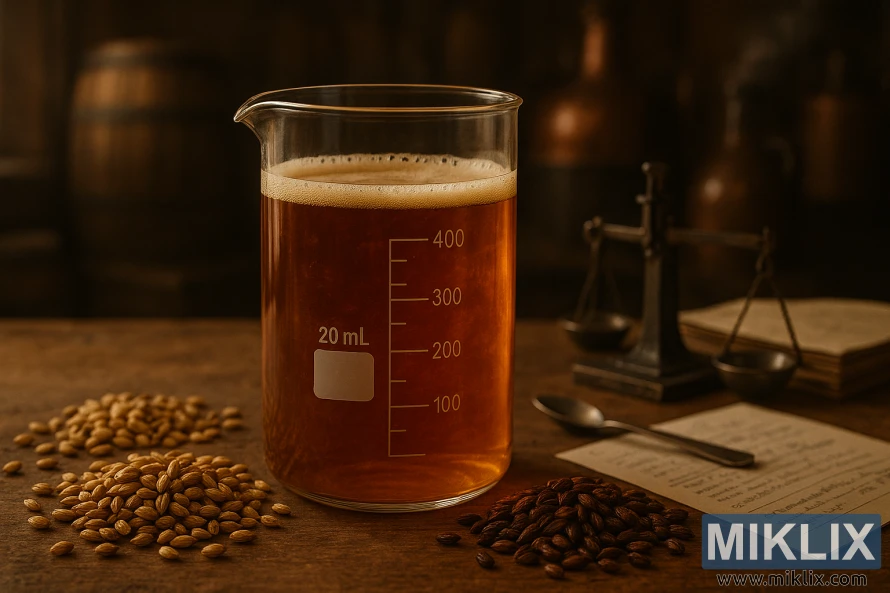
Achieving the Perfect Toasted Character
Special roast malt demands precise roasting techniques to hit the toasted character mark. The art of toasting malt significantly shapes the beer's flavor profile. By tweaking roasting times and temperatures, brewers can coax a spectrum of toasted flavors. These range from delicate hints to deep, complex notes.
The roasting method is critical, as it directly shapes the beer's final taste. Under-toasting can leave the beer lacking depth, while over-toasting can introduce bitter or burnt notes. So, it's vital to keep a close eye on the roasting process.
Here are key considerations for achieving the perfect toasted character:
- Control of roasting temperature to prevent over-toasting or under-toasting.
- Monitoring roasting time to achieve the desired level of toastiness.
- Selection of the right type of malt for the specific beer style being brewed.
By mastering these elements, brewers can elevate their beers' flavor profiles. They create complex, engaging brews that cater to diverse tastes. The perfect toasted character is a testament to a brewer's skill, a key objective when using special roast malt.
Common Brewing Challenges
Special roast malt adds a unique twist to many beer styles, but it comes with its own set of challenges. Achieving the right flavor is a primary concern. The flavor of special roast malt can vary based on roasting time, temperature, and ingredient ratios.
Extraction is another hurdle brewers might face. Its low moisture content makes it hard to extract, necessitating adjustments in the brewing process. Brewers must troubleshoot any brewing issues to get the flavor and extraction they desire.
Common issues include:
- Inconsistent flavor profiles due to variations in roasting time or temperature
- Difficulty achieving the desired level of extraction
- Imbalances in the beer's overall character due to the proportions of special roast malt used
Understanding these challenges and addressing them can help brewers successfully use special roast malt. This way, they can craft high-quality beers with unique and complex flavors.
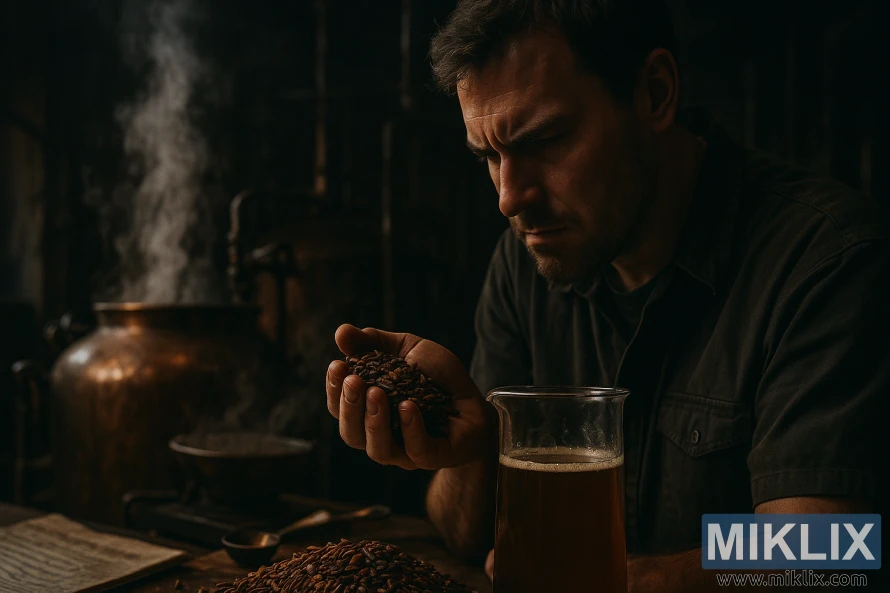
Storage and Handling Best Practices
To keep special roast malt's unique flavors, brewers must follow key storage and handling tips. This malt is sensitive to light and moisture, which can alter its taste and quality.
Proper storage conditions are essential for maintaining special roast malt's quality. It's best to store it in a cool, dry spot, away from sunlight and moisture. This method helps preserve its flavor and aroma.
When handling special roast malt, care is needed to avoid damage or contamination. Brewers should use clean equipment and storage containers to prevent contamination. This ensures the malt's integrity.
Here are some best practices for storing and handling special roast malt:
- Keep the malt in airtight containers to shield it from moisture and light.
- Store containers in a cool, dry area.
- Handle the malt carefully to prevent breakage or damage.
- Adhere to proper sanitation procedures to avoid contamination.
By sticking to these practices, brewers can keep their special roast malt in top condition. This makes it ready for brewing a wide range of beer styles.
Commercial Examples Using Special Roast Malt
Commercial breweries often turn to special roast malt to craft complex flavors in their beers. This ingredient is key for stouts and porters, known for their deep, roasted tastes.
Many famous breweries have mastered using special roast malt in their recipes. Guinness stout, for example, uses roasted unmalted barley and special roast malt for its distinctive dry, roasted taste. Baltic porters also rely on special roast malt, creating a deep flavor with notes of chocolate, coffee, and caramel.
- Robust porters with hints of vanilla and nuts
- Imperial stouts with rich, chocolatey flavors
- Baltic porters with a balanced blend of sweet and roasted notes
These examples highlight the versatility and importance of special roast malt in brewing. By examining these commercial beers, brewers can learn how to use special roast malt to elevate their own brews.
Quality Assessment and Sensory Evaluation
Brewers must carefully assess the quality of special roast malt to ensure the best brewing results. Quality assessment involves evaluating the malt's flavor profile, aroma, and appearance. This process helps brewers identify any issues with the malt that could impact the final beer.
The sensory evaluation of beer brewed with special roast malt is also critical. It offers valuable insights into the malt's quality and its impact on the beer's character. Brewers can use this information to adjust their recipes and brewing techniques to achieve the desired flavor profile.
To conduct a thorough quality assessment and sensory evaluation, brewers should consider several factors:
- Flavor profile: Does the malt contribute the expected tangy, toasty, sourdough, or nutty flavors?
- Aroma: Is the aroma of the malt consistent with its flavor profile?
- Appearance: Does the malt affect the beer's color and clarity as expected?
By carefully evaluating these factors, brewers can ensure that their special roast malt is of high quality. This ensures that their beer meets the desired standards.
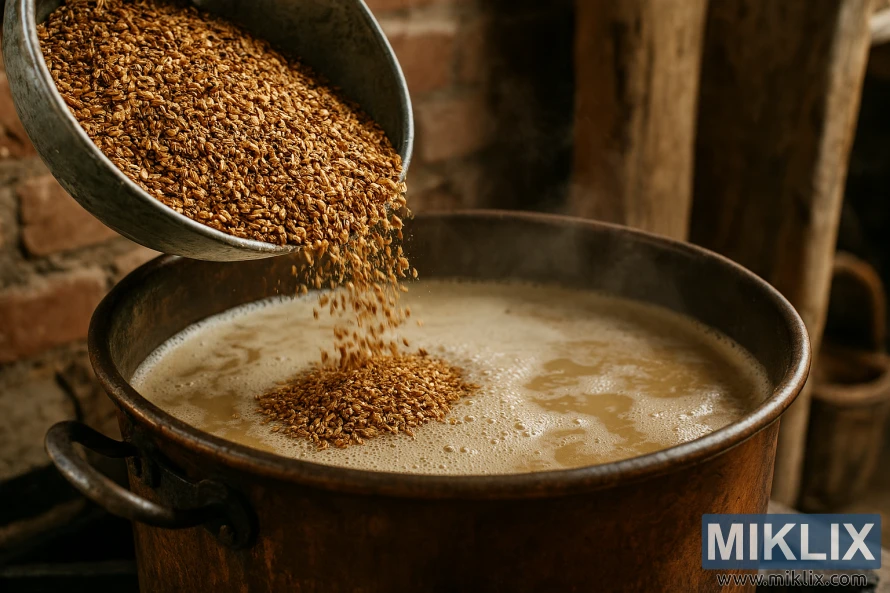
Pairing and Serving Recommendations
To fully appreciate the complex flavors of special roast malt beers, consider pairing them with complementary cuisine. The nutty, toasty notes in these beers make them a great match for roasted meats, such as beef or lamb.
For a more adventurous pairing, try matching your special roast malt beer with rich, savory dishes like stews or braises. The beer's depth of flavor will complement the bold flavors of the dish.
When it comes to serving, consider using a glass that showcases the beer's color and aroma. A snifter or tulip glass is ideal for special roast malt beers, as they concentrate the aromas and flavors.
Some popular serving recommendations include:
- Serve at a temperature between 50°F to 55°F to bring out the optimal flavor.
- Pair with sweet dishes like desserts or fruit to balance the savory flavors.
- Experiment with different food pairings to find your favorite match.
By following these pairing and serving recommendations, you can enhance your overall experience of enjoying beers made with special roast malt.
Conclusion
Special roast malt brings depth and complexity to a variety of beer styles. By grasping its key characteristics, brewers can craft recipes that highlight its rich flavor. This ingredient is a game-changer for those looking to elevate their brews.
It can transform beers, adding notes from tangy and toasty to nutty and sourdough. Whether you're an experienced brewer or just beginning, special roast malt can introduce exciting new flavors to your creations.
In summary, special roast malt is a must-have for any brewer. Its unique flavor and versatility make it perfect for craft brewers eager to innovate and try out new recipes.
Further Reading
If you enjoyed this post, you may also like these suggestions:
- Brewing Beer with Dehusked Carafa Malt
- Brewing Beer with Midnight Wheat Malt
- Brewing Beer with Pale Ale Malt
